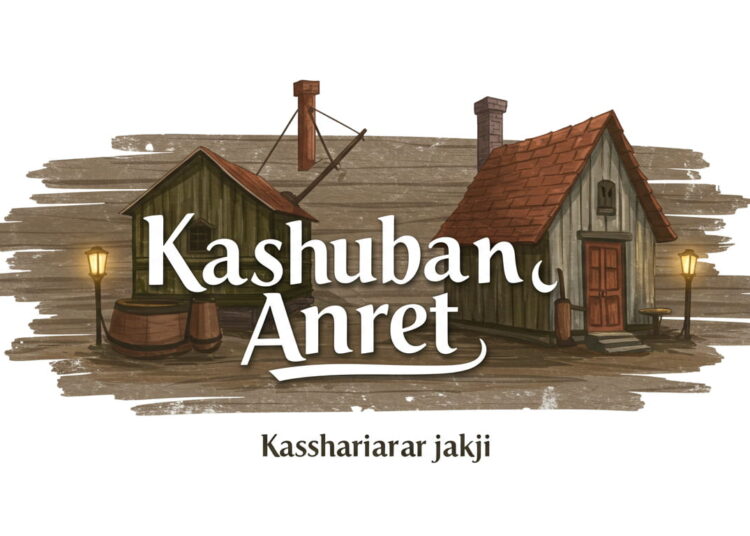The phrase “Kashubka Annet” is steadily gaining interest in cultural and digital circles. While the words themselves carry a layered meaning, they connect deeply to Kashubian traditions, regional identity, and the contemporary wave of online expression. To understand its significance, one must look at its cultural background, the people associated with it, and the evolving ways it is used in both heritage and modern spaces.
This article takes a detailed look at Kashubka Annet—its origins, interpretations, cultural value, and its role in shaping personal and community identity today.
Understanding the Kashubian Roots
The word Kashubka refers to a woman from the Kashubian community, an ethnic group primarily found in northern Poland, especially in the Pomeranian region. The Kashubians have a rich linguistic and cultural history, maintaining their unique language (Kashubian), traditions, music, and crafts.
“Kashubka” therefore is not just a descriptive word but a symbol of cultural pride and belonging. It carries the weight of history, resilience, and identity in a world where many smaller ethnic groups have faded into obscurity.
The name Annet can be a personal name, often associated with modern identities. When paired with “Kashubka,” it blends the traditional with the contemporary—a Kashubian woman who embraces both her heritage and modern self-expression.
Kashubka Annet as a Cultural Identity
For many people of Kashubian descent, identity is closely tied to their language, folk art, and folklore. Traditional embroidery, folk songs, and the Kashubian dialect represent an important cultural heritage.

The term Kashubka Annet can be seen as a representative identity for Kashubian women today:
- Pride in heritage: Carrying forward traditions like folk embroidery, wooden crafts, and Kashubian songs.
- Modern representation: Women embracing modern lifestyles while still holding on to their cultural roots.
- Digital presence: Many Kashubian women, including those who may go by names like Annet, are active in sharing their culture online through blogs, social media, and artistic platforms.
Linguistic Value of the Term
The Kashubian language itself is recognized as a regional language in Poland, with efforts being made to preserve and promote it in schools, cultural centers, and festivals. The use of words like “Kashubka” in combination with modern names like “Annet” represents a fusion of old and new linguistic traditions.
This reflects how language evolves—maintaining cultural markers while adopting modern influences. It makes Kashubka Annet not just a name but a living symbol of cultural adaptability.
Folk Traditions and Kashubian Women
Kashubian women have historically been the guardians of traditions. Through crafts like embroidery, weaving, and pottery, they ensured that cultural expressions were passed down generations. The embroidery patterns, often full of symbolic flowers, colors, and regional motifs, are among the most recognizable Kashubian art forms.
By connecting this role with “Annet,” we see the idea of modern women carrying forward traditional wisdom while finding a place in the modern world.
Kashubka Annet in Digital Culture
Today, many people of Kashubian heritage share their traditions on platforms such as YouTube, Instagram, and TikTok. It is not uncommon to see Kashubian songs, dances, and embroidery showcased online.
The phrase “Kashubka Annet” has a digital life of its own. Whether it refers to a cultural persona, an individual, or even an online identity, it reflects how ethnic pride meets modern self-expression.
Also read: Bishop Budde Woke Controversy
Global Recognition of Kashubian Culture
While the Kashubians are a relatively small community, they have received growing recognition globally. Cultural festivals, research papers, and heritage preservation efforts have placed them in the spotlight.
“Kashubka Annet” in this context serves as a personalized face of Kashubian identity, making the traditions more relatable to global audiences.
The Role of Women in Preserving Kashubian Identity
Across history, Kashubian women played a central role in keeping the traditions alive. They managed households, taught the dialect, maintained folk practices, and ensured that children grew up with cultural knowledge.
- Educators of culture: Passing down language and traditions.
- Artists of heritage: Embroidery and crafts as cultural identity.
- Modern influencers: Using digital platforms to keep Kashubian traditions alive.
“Kashubka Annet” can thus be seen as a tribute to Kashubian women across generations.
Kashubian Festivals and Celebrations
Kashubians celebrate many cultural festivals, where women play a central role in dressing in traditional attire, singing folk songs, and showcasing embroidery patterns. The presence of figures like “Kashubka Annet” in such contexts reflects the continuity of tradition across ages.

Some well-known cultural highlights include:
- Kashubian Unity Day (Dzień Jedności Kaszubów)
- Folk Music Performances
- Traditional Costume Parades
- Language Celebrations
Kashubka Annet in the Context of Modern Identity
The world today is highly interconnected, and many Kashubians live abroad. For them, terms like “Kashubka Annet” may represent nostalgia, cultural pride, and digital connection to roots.
It allows Kashubian women to create a hybrid identity—rooted in their ancestral traditions but also thriving in the global modern space.
SEO Value of the Term
From an SEO perspective, the keyword Kashubka Annet is a unique and low-competition phrase that carries potential for building cultural, identity-based, and lifestyle-related content. It appeals to niches like:
- Cultural heritage blogs
- Identity and ancestry discussions
- Personal branding with ethnic roots
- Digital storytelling platforms
Content built around “Kashubka Annet” therefore has long-term relevance, especially for cultural awareness, personal identity, and heritage preservation.
Also read: Xốhanoi
Future of Kashubka Annet
As Kashubian culture becomes more widely recognized, names and phrases like Kashubka Annet will grow in symbolic importance. They may represent:
- Cultural ambassadors who showcase Kashubian pride globally.
- Digital influencers embracing heritage alongside modern content.
- Identity markers for Kashubians worldwide.
FAQs on Kashubka Annet
1. What does Kashubka mean?
Kashubka means a woman belonging to the Kashubian ethnic group in Poland.
2. Who are the Kashubians?
The Kashubians are an ethnic group from northern Poland with their own language, traditions, and cultural heritage.
3. What is the meaning of Kashubka Annet?
It combines Kashubka (a Kashubian woman) with the name Annet, symbolizing cultural pride and modern identity.
4. Is Kashubian a separate language?
Yes, Kashubian is recognized as a regional language in Poland, distinct from Polish.
5. Why is Kashubka Annet important?
It represents the blend of Kashubian heritage with modern personal identity.
6. What are Kashubian traditions?
They include folk embroidery, music, dances, and festivals celebrating cultural heritage.
7. Is Kashubka Annet a real person?
It may refer to individuals but is also used as a symbolic cultural identity.
8. How do Kashubians celebrate their culture?
Through festivals, language events, music performances, and traditional crafts.
9. Where is the Kashubian region located?
Primarily in the Pomeranian Voivodeship in northern Poland.
10. Can Kashubka Annet be used in digital branding?
Yes, it works well for personal or cultural branding that highlights Kashubian roots.
Conclusion:
The phrase Kashubka Annet is more than just a name—it is a symbol of cultural pride, heritage, and modern self-expression. It bridges the old with the new, reminding us that traditions live on not just in history books but also in the identities of people today.
As Kashubians continue to celebrate their language, music, and crafts, terms like Kashubka Annet ensure that these traditions remain alive and relevant in the digital age.
Related post:
















